Slow Cognition: How did I develop the "Product Engagement" Framework?

Using Knowledge Discovery Canvas for Project Reflection
In Feb, I wrote a series of articles about Product-centered Business Development within two weeks. Business is a large field of social practice, I only focus on Product-centered Business Development activity. I used the Theory-based Reflection approach to adopt two theoretical approaches in order to develop a new Perspective called “Product Engagement”.
The outcome of the project is a possible book as a summary of my articles.
- 4 Parts
- 29 articles
- Total 613 min read
- Total 162,445 words (about 325 single-spaced pages)
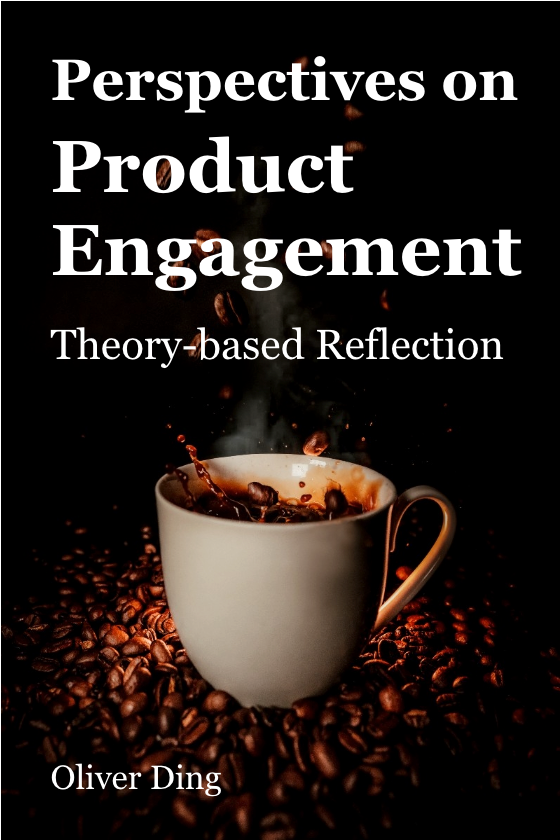
You can find more details in TALE: Perspectives on Product Engagement (v1.0).
Today I am going to use the Knowledge Discovery Canvas to reflect on the short journey of “Product Engagement”.
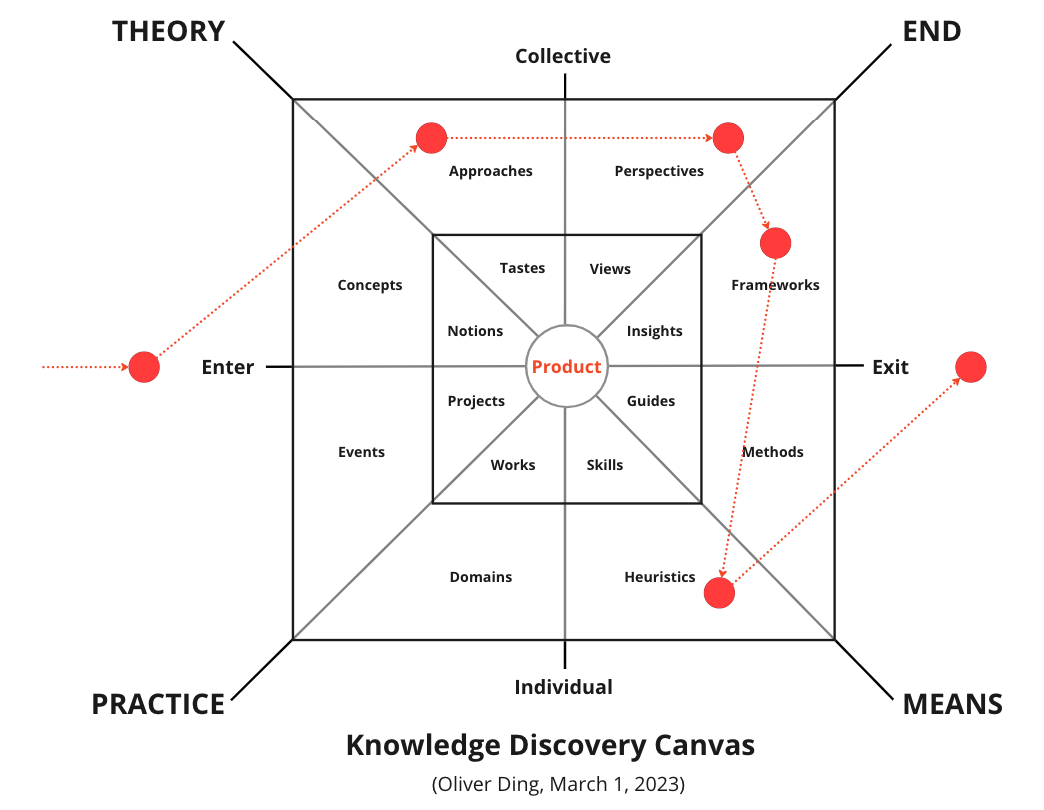
1. Approaches
For the Knowledge Discovery Canvas, I use “Approaches” and “Perspectives” for two blocks. What’s the difference between these two terms?
- I use “Approaches” to refer to Theoretical Approaches.
- I use “Perspectives” to refer to Theoretical Perspectives and Practice Perspectives.
Theoretical approaches and Theoretical perspectives are the same things. For example, I mentioned the ecological approach in D as Diagramming: The Mind as Play Metaphor.
However, some knowledge projects are not about developing theoretical approaches but applying theoretical approaches to some domains. During the process of application, we can develop practical perspectives from theoretical approaches.
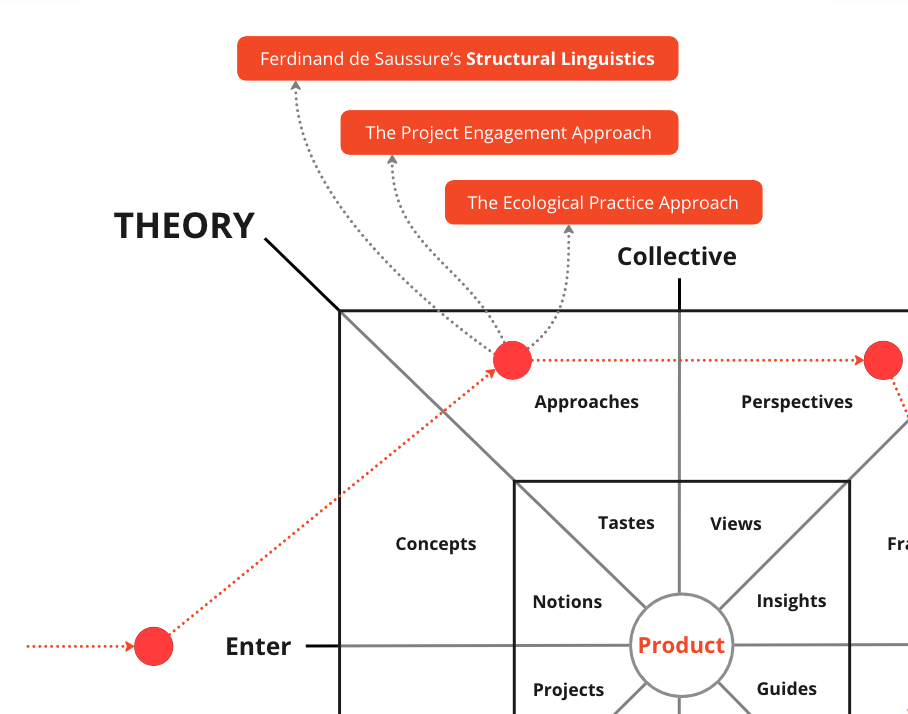
The Product Engagement project aims to develop a practical perspective to understand Product-centered Business Development.
For the “Product Engagement” project, there are three major theoretical approaches:
- The Ecological Practice Approach (inspired by Ecological Psychology)
- The Project Engagement Approach (inspired by Activity Theory)
- Ferdinand de Saussure’s Structural Linguistics
I used these three approaches as Theoretical Resouces for the Project Engagement project. In this way, the tasks of the project are very simple, I only need to translate these approaches to the field of Product-centered Business Development.
2. Perspectives
The “Product Engagement” theme indicates a new creative space for connecting THEORY and PRACTICE.
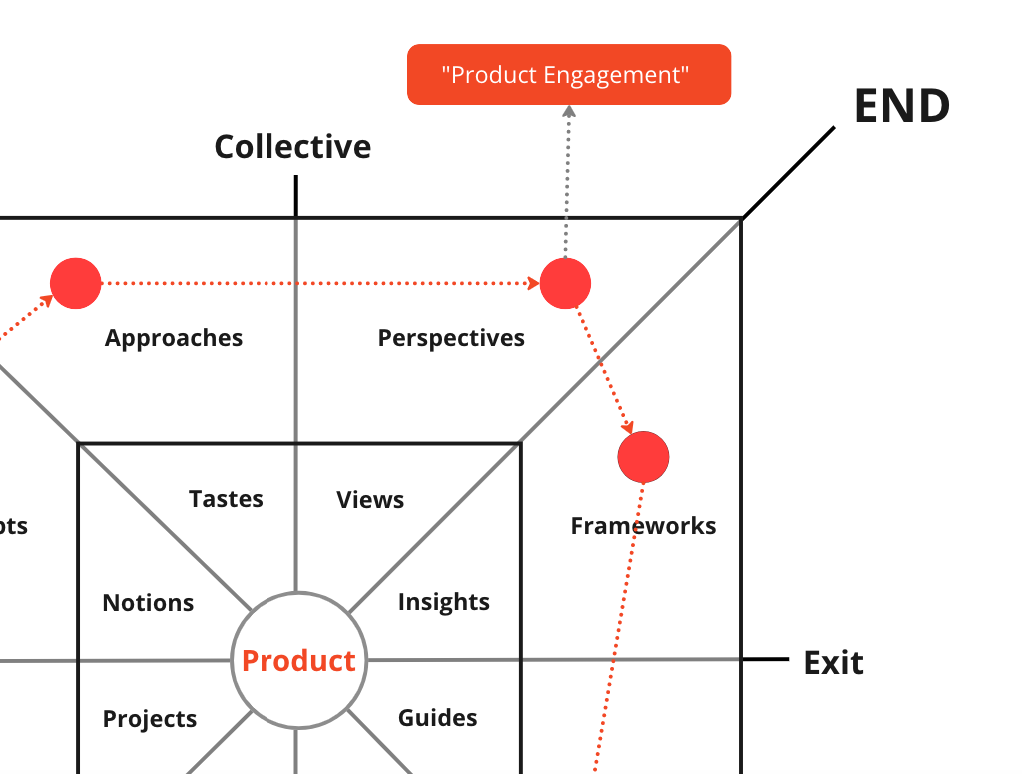
As mentioned above, “Product Engagement” is a Practice Perspective. I used the following diagram to frame the creative space and discover the theme of “Product Engagement”.
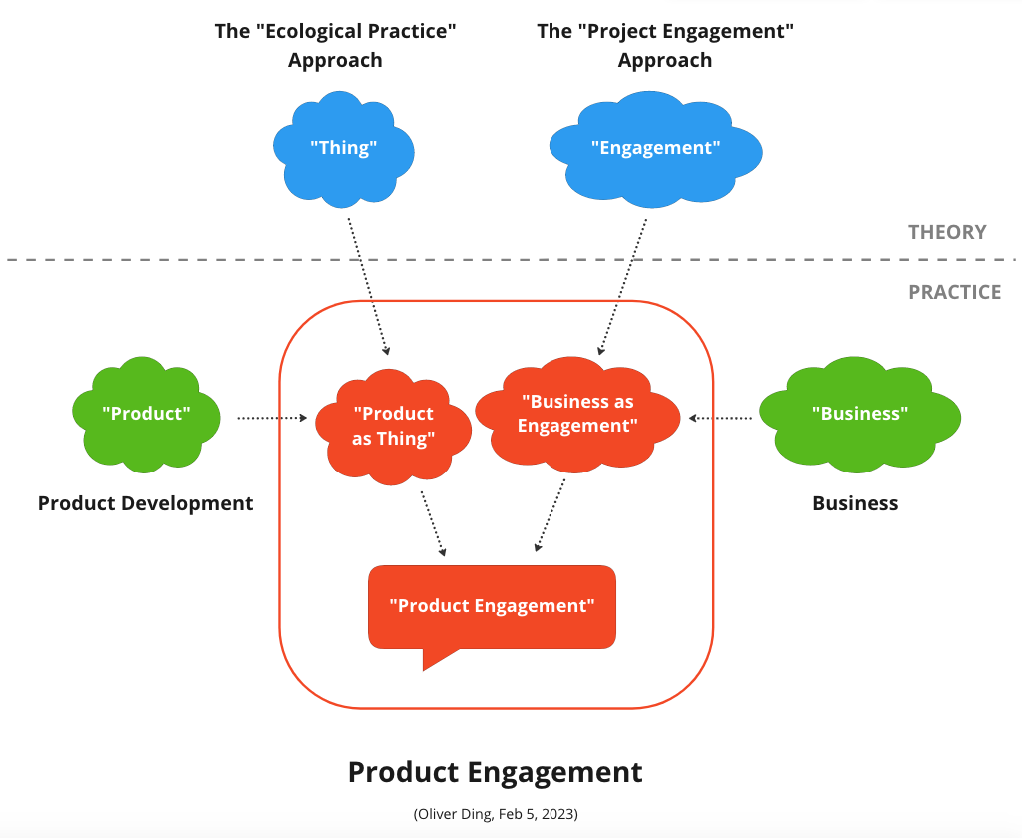
We should pay attention to the theme of “Business as Engagement” because it frames the context for the theme of Product Engagement”. In fact, I used the Project Engagement approach to develop a framework called “Business as Engagement”. See the diagram below.
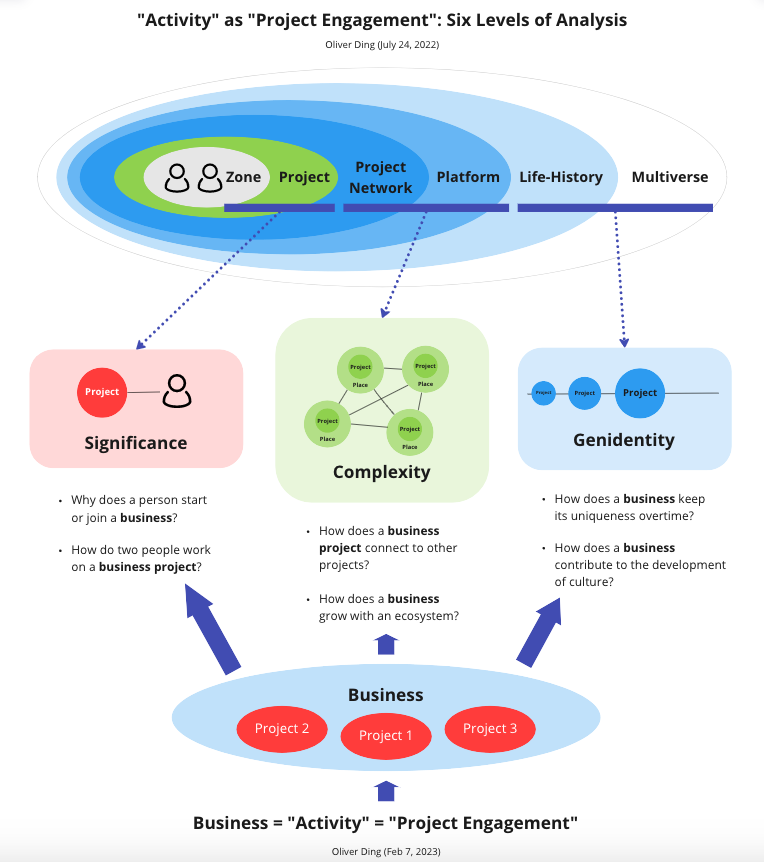
The above diagram lists three types of Projects which led to the Idea Engagement framework. See the diagram below.
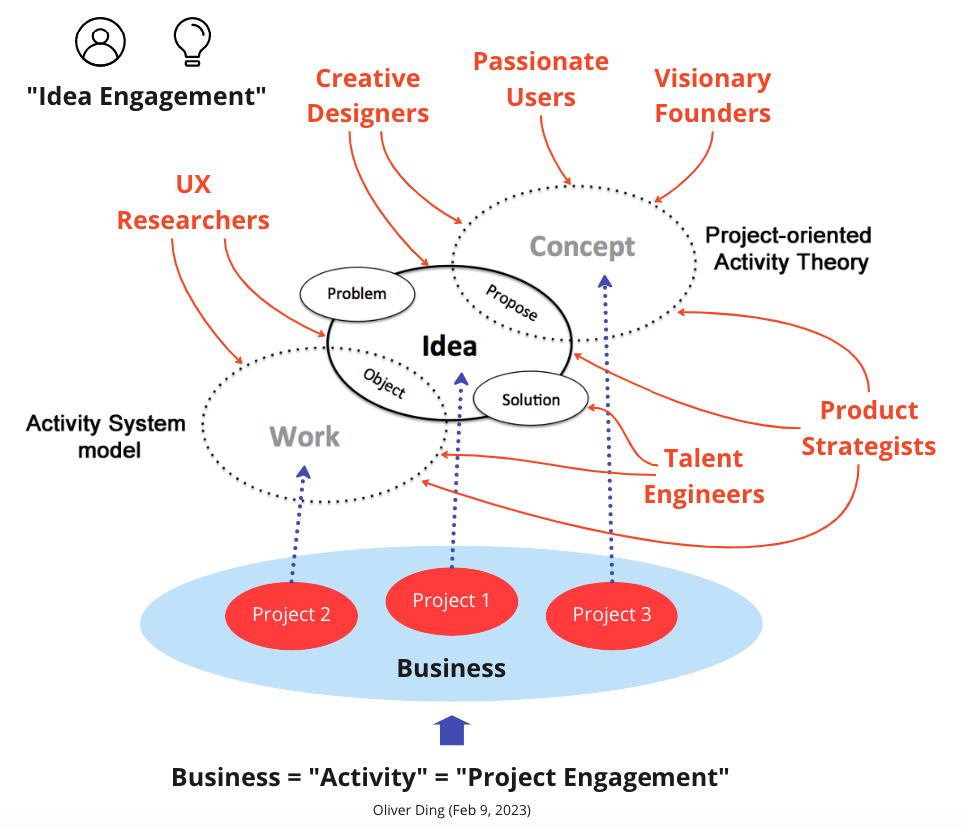
You can find more details in TALE: A Possible Theme called “Business as Engagement”, TALE: A Possible Theme called “Idea Engagement”, and TALE: Idea Engagement, Members of Projects, and A New Canvas.
3. Frameworks
In the past years, I wrote 18 possible books and a set of frameworks. For the Product Engagement project, I adopted 18 frameworks I made in the past years to the creative space.
- The HERO U Framework
- The Value Engagement Framework
- The Project Engagement Toolkit (v1.0)
- Cultural Projection Analysis
- The ARCH Framework
- The Project Network Framework
- The Supportive Cycle Model (v1.0)
- The Platform Genidentity Framework
- The Attachance Framework
- The SET Framework
- The Lifesystem Framework
- The Concept-fit Framework
- The Anticipatory Activity System (AAS) framework
- The Affordance — Supportance Cycle
- The Curated Mind Framework
- The HITED Framework
- The “Modeling A Developmental Project” Framework
- The “Curative Life Curation” Framework
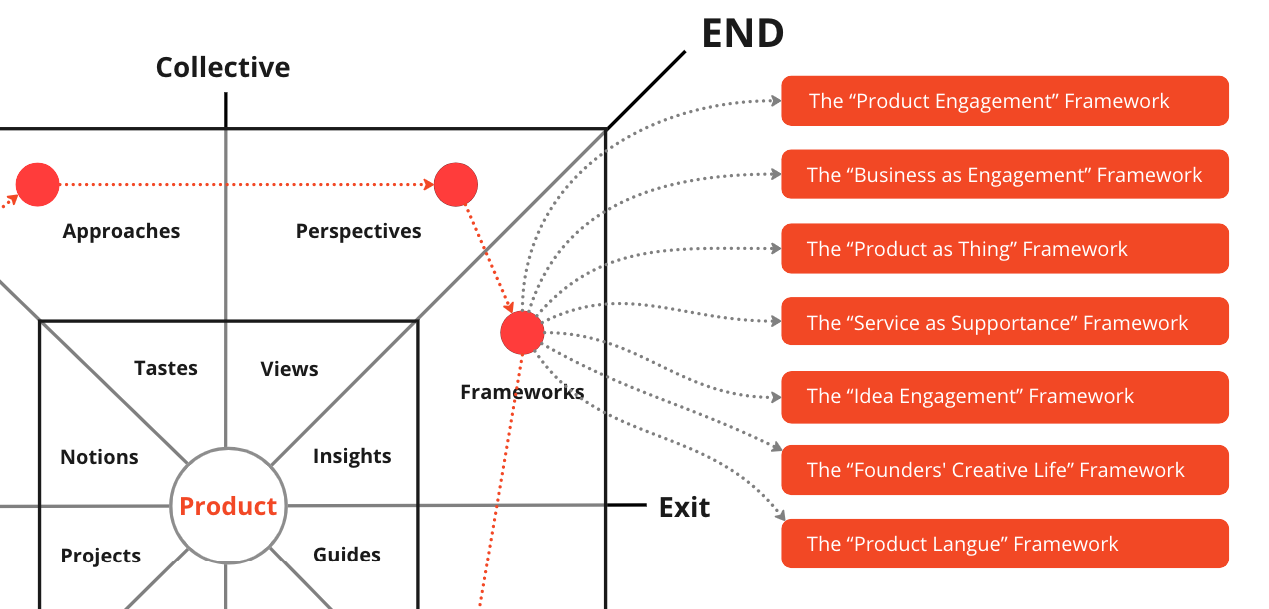
I also developed 7 new frameworks in the creative space.
- The “Product Engagement” Framework
- The “Business as Engagement” Framework
- The “Product as Thing” Framework
- The “Service as Supportance” Framework
- The “Idea Engagement” Framework
- The “Founders’ Creative Life” Framework
- The “Product Langue” Framework
The most exciting idea is the “Product Langue” Framework. On Jan 25, 2023, I shared a possible theme called “Product Langue” with the above picture. Initially, I used it to refer to an idea about Knowledge Engagement about Product.
Langue and Parole is a theoretical linguistic dichotomy distinguished by Ferdinand de Saussure. Langue refers to the abstract system of language while Parole means concrete speech.
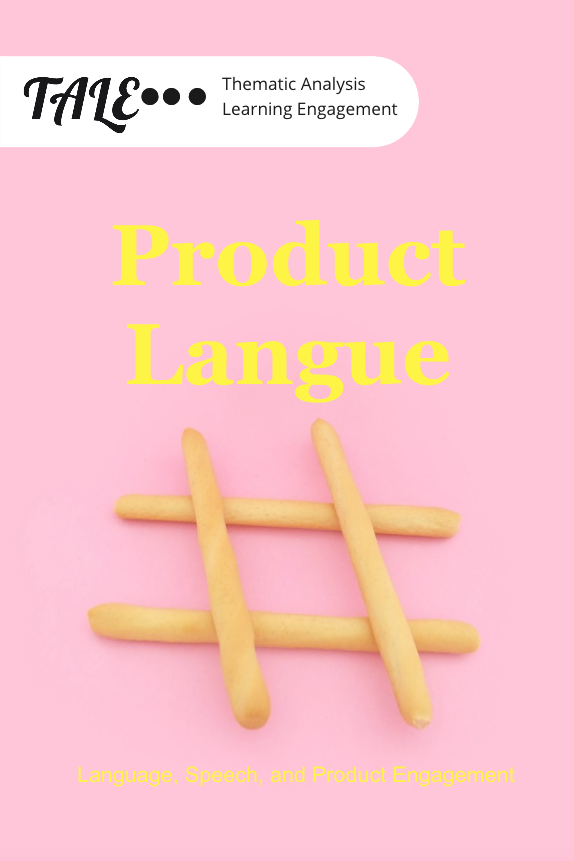
On Feb 27, I developed a new framework about the theme of “Product Langue”.
- Product Langue: an abstract thing that describes what a product is.
- Product Speech: what people actually say about a product in various concrete situations.
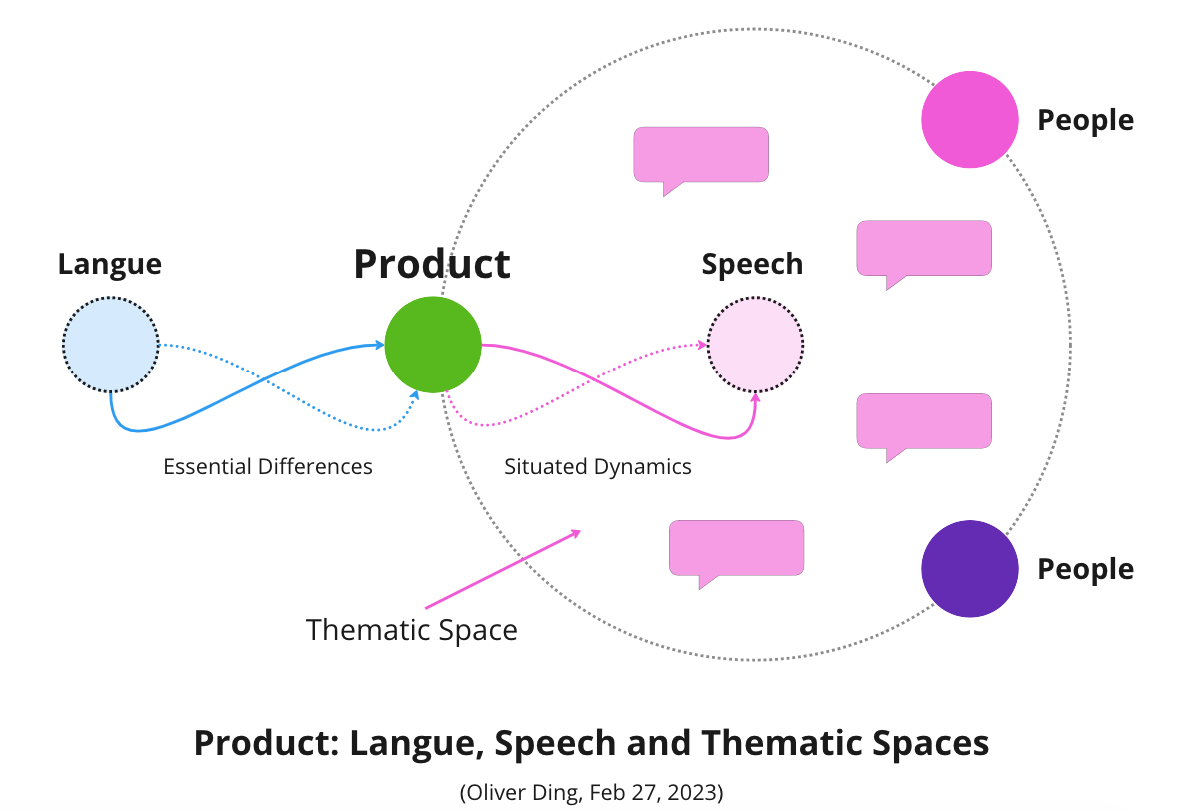
The new idea offers a Linguistic Perspective on Product Engagement. Moreover, it also indicates a possible way of empirical research. We can focus on collecting data about Product Speech and use them to explain Product Langue which represents Product Core.
This is a significant insight! It may lead to a new project!
4. Heuristics
In addition, I also made three new canvases.
- Idea Engagement Canvas
- Code Engagement Canvas
- Product Engagement Canvas
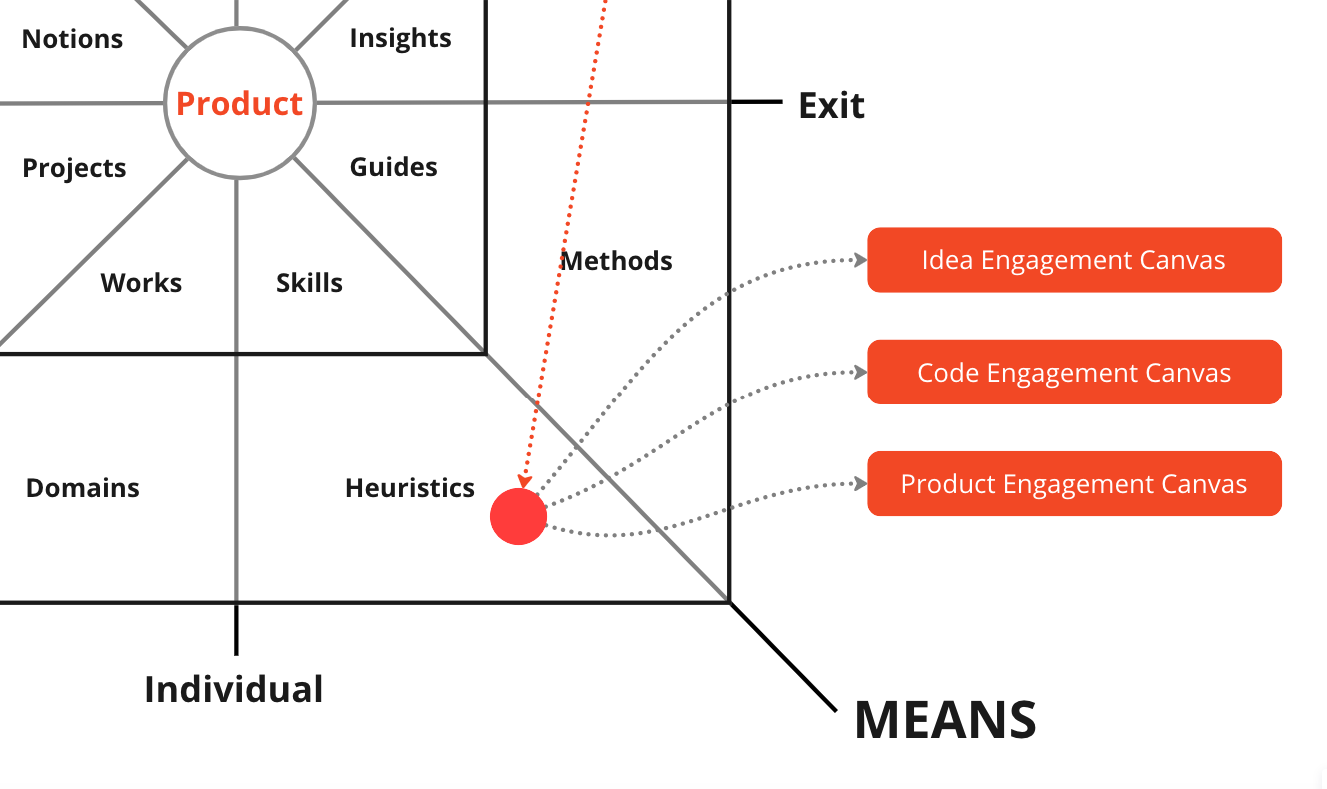
These three canvases are based on a meta-canvas called Thematic Matrix Canvas which has an old name called Thematic Space Canvas. In 2022, I used it to make several canvases.
The Product Engagement Canvas aims to offer a tool for Developing Tacit Knowledge about Product Engagement. It defines five thematic spaces. See the picture below.
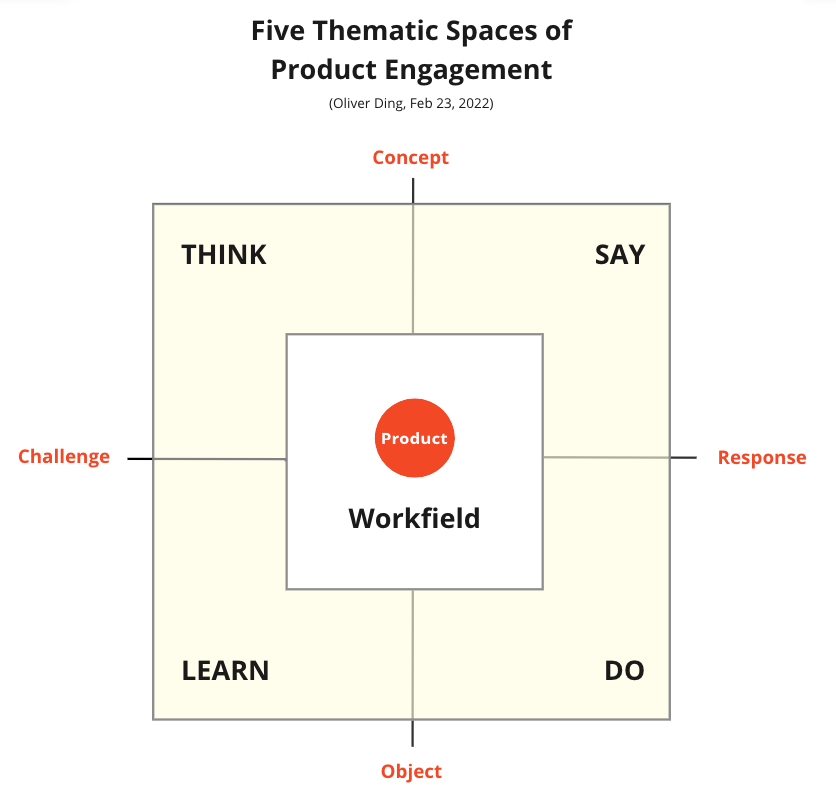
This canvas is inspired by Life Discovery Canvas (Oliver Ding, 2022).
Founders and people who are working in the field of product-based business development, their Creative Life are defined by their projects of building products.
Thus, we can use four areas of “Life Discovery Canvas” for Product Engagement.
- Think
- Learn
- Say
- Do
In fact, “Life Discovery” is a type of “Developing Tacit Knowledge”.
The uniqueness of Life Discovery Canvas is that it adopts the perspective of Activity Theory and considers the whole thing as an activity. Moreover, it uses inner space and outer space to represent the “Internalization — externalization” principle of Activity Theory.
For the Developing Tacit Knowledge, I call it “Objective — Subjective” Knowledge Curation. While Objective Knowing refers to outer space, Subjective Knowing refers to inner space.
For Product Engagement, the inner space is named “Workfield” which is a Product-centered knowledge engagement space for team members.
I still working on some details of this new canvas. So far, you can re-visit Life Discovery Canvas:
- The Life Discovery Canvas (v1.0) — Part 1: Theoretical Background
- The Life Discovery Canvas (v1.0) — Part 2: Spatial Structure
- The Life Discovery Canvas (v1.0) — Part 3A: Concepts (THINK and LEARN)
- The Life Discovery Canvas (v1.0) — Part 3B: Concepts (SAY and DO)
- The Life Discovery Canvas (v1.0) — Part 4: Inspirations
5. Exit
The outcome of the project is fantastic! The outcome of the project is a possible book.
- 4 Parts
- 29 articles
- Total 613 min read
- Total 162,445 words (about 325 single-spaced pages)
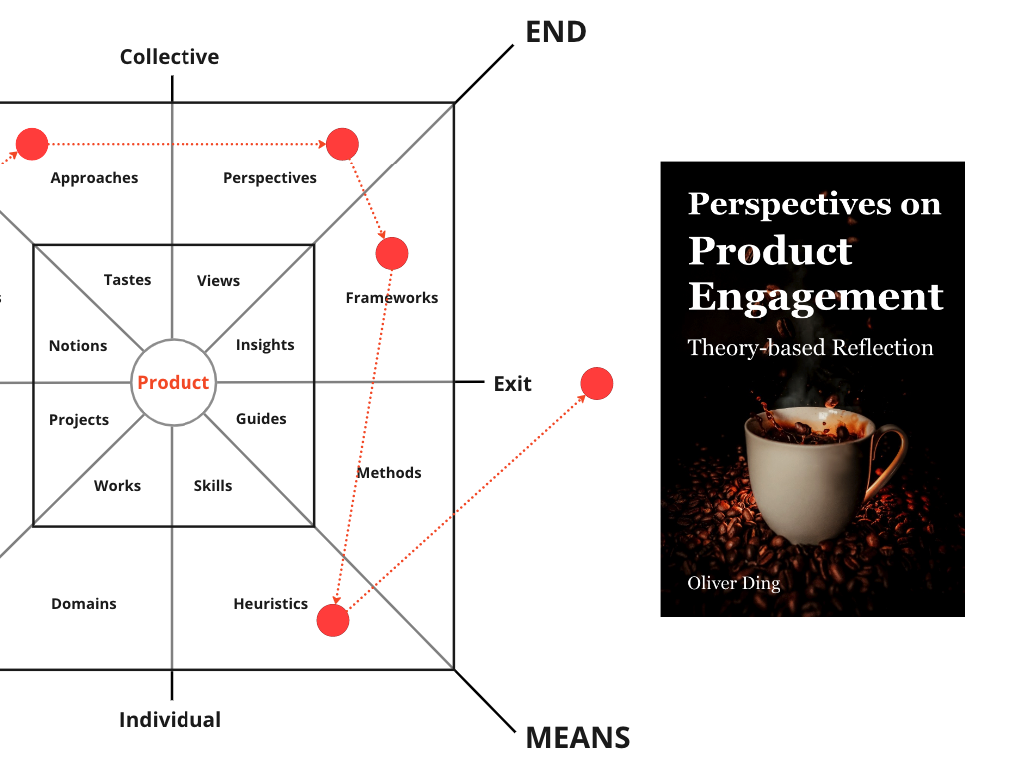
You can find more details in TALE: Perspectives on Product Engagement (v1.0).
The possible book is not my original goal. It is just a container for containing various ideas from the Product Engagement perspective.
A by-product of the project is a mental element called “Dance”. See the diagram below.
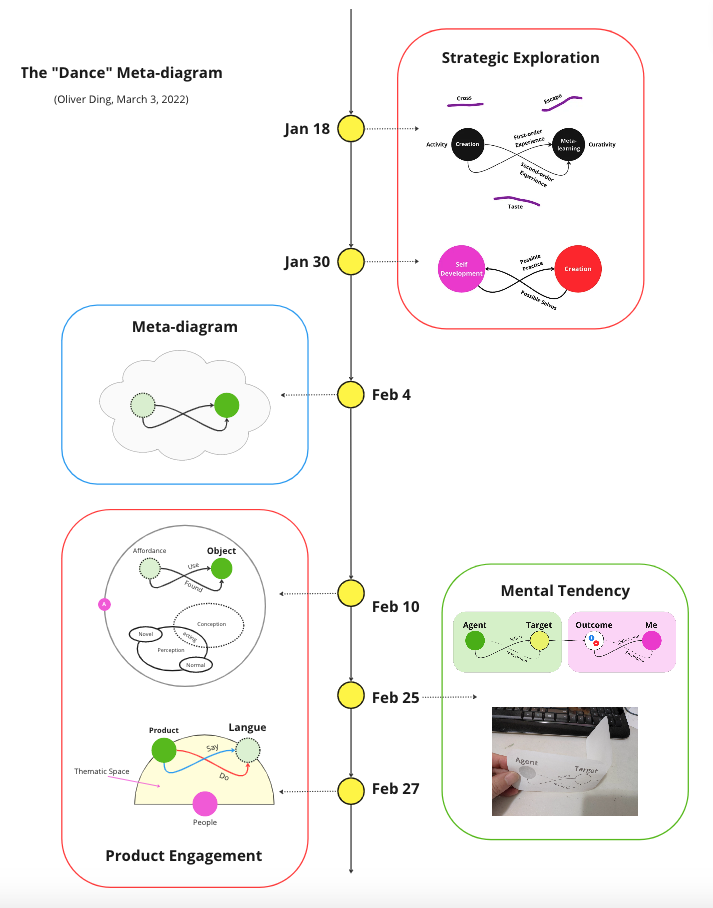
I also used it to conduct a case study of “Mental Moves”. You can find more details in Creative Action: The Chance-configuration Theory and Beyond and Creative Action: The Attachance of Moving Mental Elements.
6. Enter
How did I start this short journey? I looked at my notes and found it started on Jan 25, 2023.
- Jan 25, 2023 — I made a possible theme called “Product Langue”.
- Feb 3, 2023 — I received an email titled “Idea Management” from a friend and we started a conversation about “Idea Engagement v.s. Idea Management”
- Feb 4, 2023 — I wrote a note titled “Idea Engagement”
- Feb 4, 2023 — I designed a diagram titled “Product Engagement” and shared it on Linkedin
The theme of “Product Langue” was inspired by George Nurijanian’s tweet about Lenny’s newsletter.
Langue and Parole is a theoretical linguistic dichotomy distinguished by Ferdinand de Saussure. Langue refers to the abstract system of language while Parole means concrete speech.
If we use the above diagram, then we can find four types of knowledge engagement about the theme of “Product”.
- Unobservable: Users’ subjective experience
- Observable: Product Managers and Researchers
- Parole: Experts who product knowledge about “Product”
- Langue: Knowledge curators who aim to turn pieces of Parole (speech) into Langue (language)
This is the seed of the Product Engagement project. Later I wrote a note titled “Idea Engagement” on Feb 4, 2023. See the screenshots below.
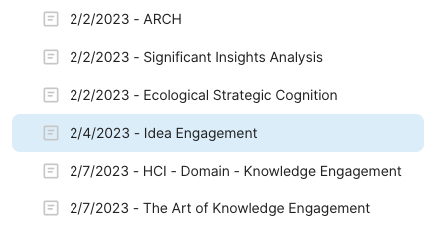
The note is also about George Nurijanian’s tweet.
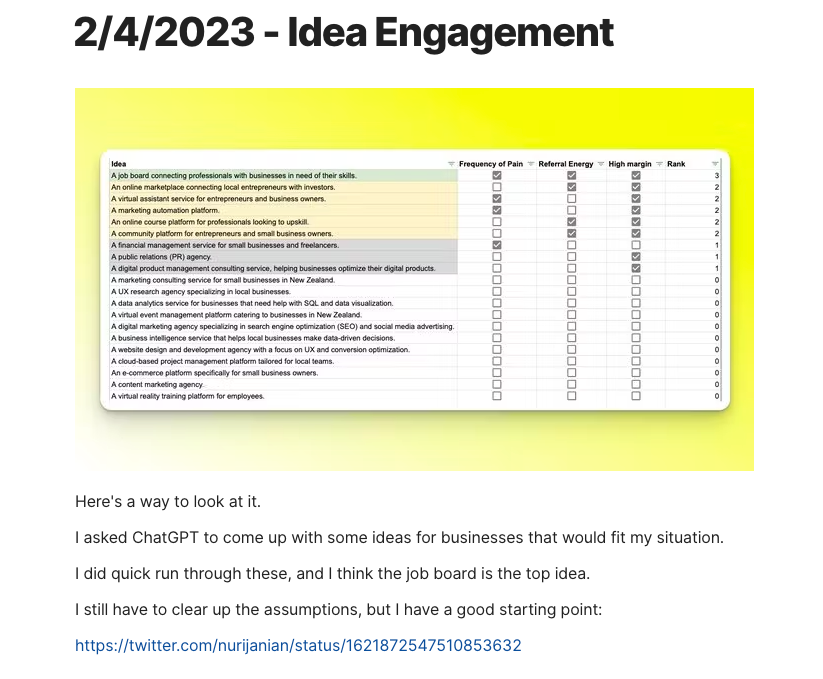
I’d like to share more information about the theme of “Idea Engagement”. I had a private conversation about “Idea Engagement v.s. Idea Management” with Maurizio Goetz via Gmail and Linkedin from Feb 3 to Feb 15.
Moreover, we need to pay attention to the mental element of “Dance” too. On Feb 4, I made the first version of “Product Engagement” and wrote a post on Linkedin. See the screenshot below.
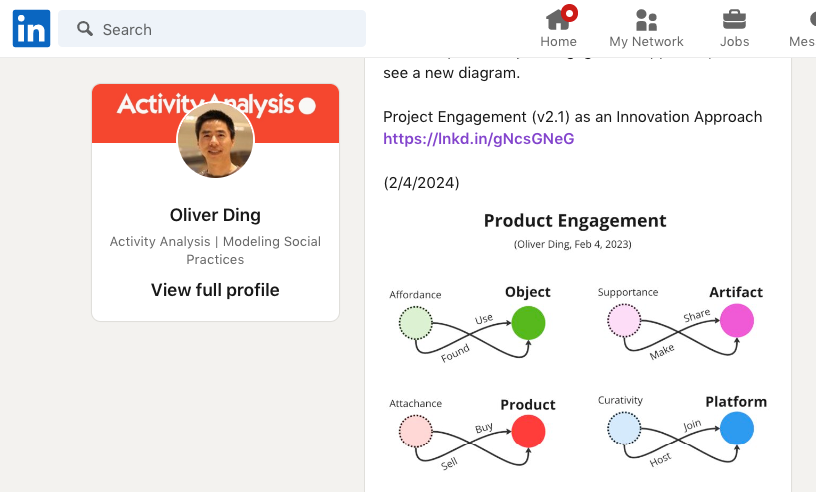
This diagram is a rough idea about the theme of “Product Engagement”.
I use “Product — Engagement” to describe the “Person — Product” interaction and relationship.
This diagram only represents the perspective of the Ecological Practice Approach.
Later, I renamed it “Product as Thing” and developed a new framework for the theme of “Product Engagement”. You can find more details in Creative Action: The Attachance of Moving Mental Elements.
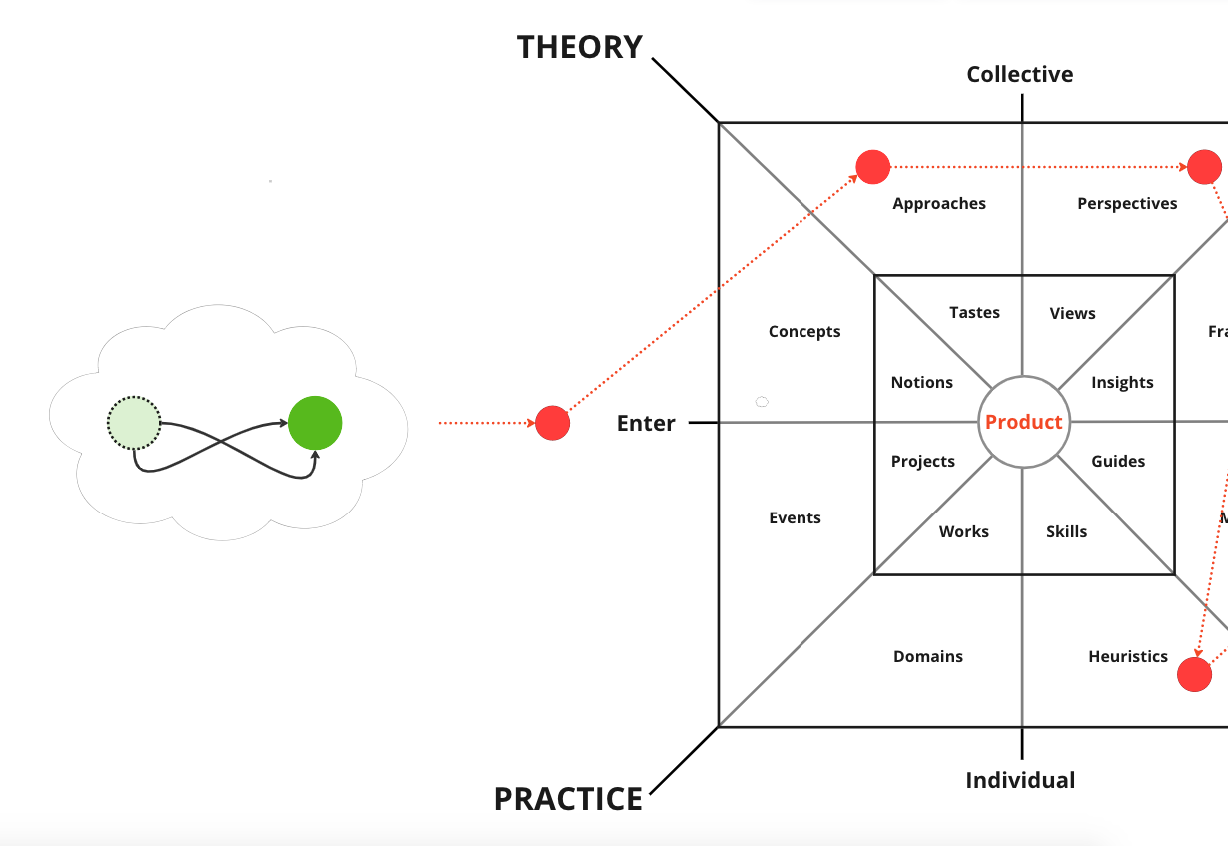
We can claim that the draft of “Product Engagement” is the starting point of the project. On Feb 6, I published the first article about the theme of “Product Engagement”.
Last week I had wonderful discussions with friends who work on product development and business in general. These conversations inspired me to connect my theoretical approaches with product and business.
Eventually, I made a new possible theme called “Product Engagement” which is represented by the above diagram.
Discussion
Knowledge Discovery Canvas was not developed for project reflection, but for Developing Tacit Knowledge. If we return to its original purpose, then the outer blocks refer to objective knowledge while the inner blocks refer to subjective personal knowledge.
In this case study, all knowledge is my personal knowledge. I only use the outer blocks to map my journey.
This reflection inspires me to make a new map. See the diagram below.
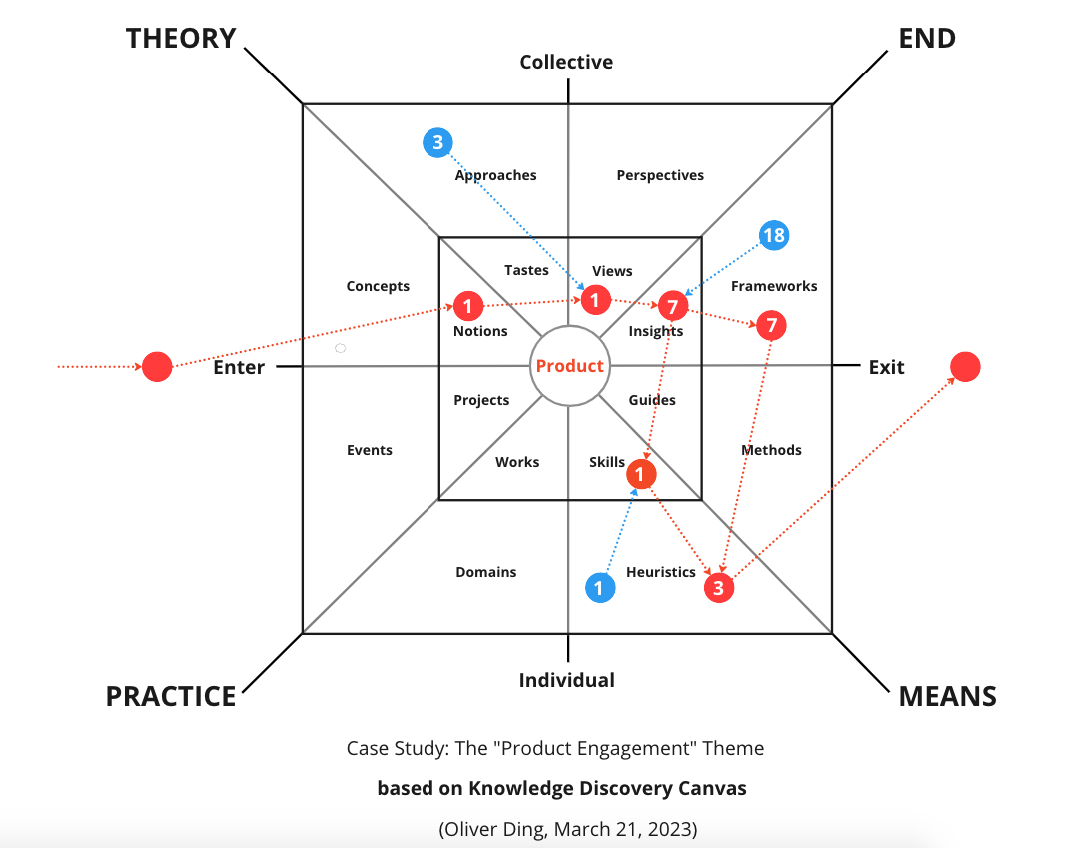
The above diagram uses a distinction between my old knowledge and my new knowledge. Blue dots refer to old knowledge while red dots refer to new knowledge.
I also add numbers to the dots. For example, we can see the following three types of old knowledge:
- 3 theoretical approaches
- 18 knowledge frameworks
- 1 heuristic tool
This map is more complicated than the old version. We can use both two versions.
